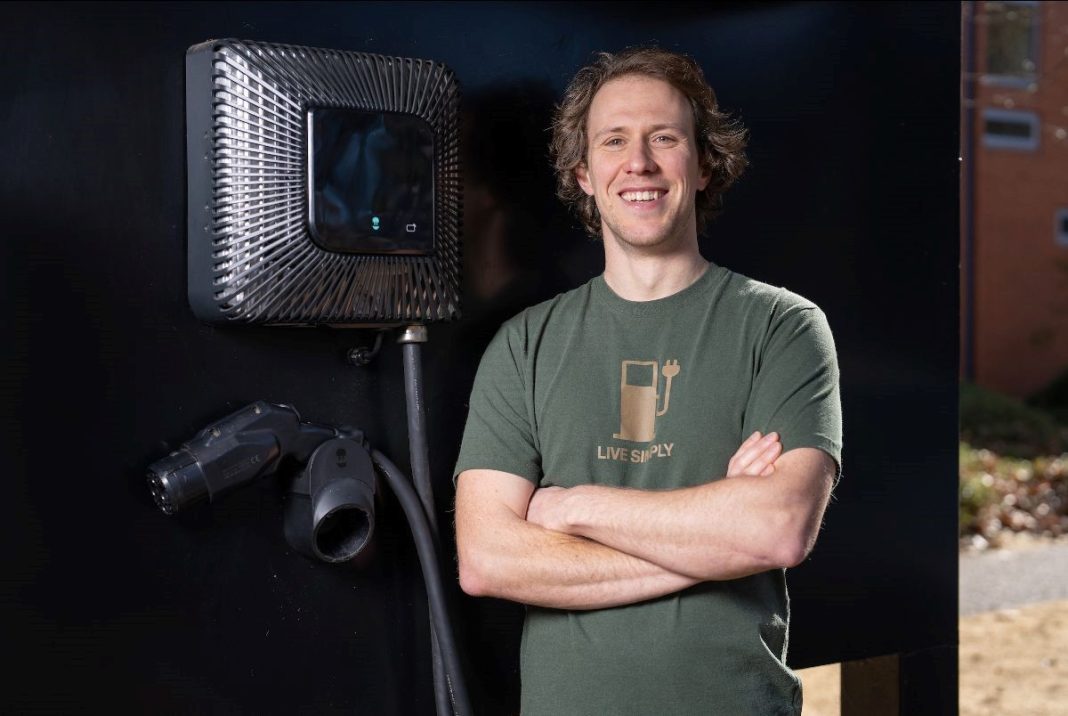In a world-first, a fleet of ACT Government electric vehicles fed power back into the national energy grid when storms in February plunged more than half a million homes and businesses into darkness.
“It shows electric vehicles can provide the backup we need in an emergency like this,” Dr Bjorn Sturmberg, Senior Research Fellow in the Australian National University’s Battery Storage and Grid Integration Program, said.
“[This event] was the first real-world test of our vehicles and chargers. We now know a vehicle-to-grid (V2G) system can work.”
Vehicle-to-grid technology was tested as part of the Realising Electric Vehicles to Grid Services (REVS) trial, which used a fleet of 51 Nissan Leaf vehicles to explore the ability of electric vehicles to provide additional support to the national energy grid.
“V2G technology works using a bi-directional charger, meaning the energy from an EV battery can be quickly enabled to start sending electricity back into the grid, just like rooftop solar,” Shane Rattenbury, ACT Minister for Water, Energy and Emissions Reduction, explained.
The fleet of 51 vehicles “monitors the energy grid whenever they are plugged in, and can quickly inject short bursts of power to rebalance the system if the grid rapidly loses power,” Dr Sturmberg said.
“They’re essentially big batteries on wheels.”
In February, storms in Melbourne brought down transmission towers and power lines, causing power outages to 530,000 homes and businesses in Victoria.
When the storm struck, 16 of the EVs were plugged into vehicle-to-grid smart chargers across Canberra. Four were charging, while 12 were sitting idle. They received a signal from the grid, “quickly stopped charging and within seconds started discharging power into the grid, as they’ve been programmed to do,” Dr Sturmberg said.
The EVs supplied 107 kilowatts of power to the national grid, Dr Sturmberg said.
“To put that in perspective, 105,000 vehicles responding in this way would fully cover the backup required for the whole of the ACT and NSW. For context, there were just under 100,000 EVs sold in Australia last year.”
The emergency response only lasted a few minutes before the grid stabilised and the cars began charging again, Mr Rattenbury said. There was minimal disruption to the availability of the vehicles themselves.
“These results show that V2G can be a powerful contributor to the security of our electricity grid, while also reducing emissions from transport,” Mr Rattenbury said.
“With EV uptake continuing to grow, V2G can play a pivotal role in the ACT and across Australia as we transition our national energy systems away from fossil fuels to 100 per cent renewable energy.”
Ross De Rango, head of energy and infrastructure at the Electric Vehicle Council, believes that vehicle-to-grid represents a huge opportunity for Australia.
“Over time, it will put downward pressure on energy bills for everyone (not just EV drivers), and enable us to close coal and gas fired power stations sooner. We’ll be able to meet significant amounts of energy system peak demand from our cars, rather than from burning fossil fuels, and then recharge them later on from excess wind or solar.
“With the right support from government, Australia could build on our world leading position in rooftop solar to become a world leader in V2G as well.”
However, Dr Sturmberg argues the growing demand for vehicle charging must be balanced with grid security.
“With the number of EVs on our roads growing fast, the grid won’t be able to cope with everyone charging at the same time when they get home in the evening,” he said.
“Additionally, in the case of the February emergency, once the vehicles had provided power for ten minutes, some resumed charging by default. There would be little cost or inconvenience in delaying charging for an hour or two in this kind of situation.
“It may call for an industry adjustment, for instance, to require EV manufacturers to program their vehicles to stop charging during a grid emergency, with an option for drivers to override for urgent charging.
“Stopping just 6,000 EVs charging would have kept the power on for those 90,000 customers whose power was cut on February 13.
“Our results show that vehicle-to-grid can be a powerful contributor to our power system’s security, and that all electric vehicles have an important role to play.”
The REVS project was co-funded by the Australian Renewable Energy Agency (ARENA) and the ACT Government, and led by ActewAGL Retail in partnership with Evoenergy, Nissan, Jetcharge, SG Fleet, the Australian National University, and Accenture.



